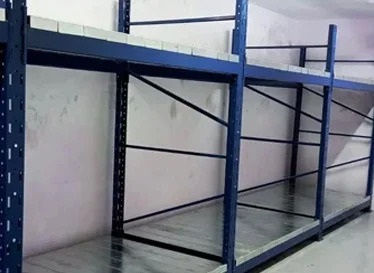Maximizing Warehouse Safety: Things Not to Do With Heavy-Duty Racks
Warehouses are bustling hubs of productivity, where efficiency and safety are paramount. Heavy Duty Racks play a crucial role in organizing inventory and optimizing space. However, misusing or mishandling these racks can lead to accidents, inventory damage, and operational disruptions. To ensure a smooth and safe warehouse environment, here are essential guidelines on what not to do with heavy-duty racks.
- Overloading Racks:
Heavy-duty racks come with specified weight capacities. Exceeding these limits poses a severe risk. Overloading weakens the racks, leading to structural failures, collapse, and potential injury. Always adhere to weight limits and distribute loads evenly across the shelves.
- Ignoring Manufacturer Guidelines:
Every heavy-duty rack system comes with manufacturer specifications and installation instructions. Disregarding these guidelines, such as improper assembly or using incorrect components, compromises the structural integrity and safety of the racks. Follow manufacturer instructions diligently to ensure proper setup and use.
- Neglecting Regular Inspections:
Routine inspections are crucial to detect any signs of wear, damage, or misalignment in heavy-duty racks. Ignoring these inspections increases the likelihood of undetected issues that could escalate into hazardous situations. Regularly assess racks for cracks, rust, or any structural irregularities.
- Improper Loading Techniques:
Incorrect loading practices, such as placing heavy items on the top shelf or unevenly distributing weight, can destabilize the racks. This imbalance raises the risk of tipping or collapse. Train warehouse staff on proper loading techniques and weight distribution to maintain stability.
- Using Damaged Racks:
Never use damaged or compromised racks. A seemingly minor dent or defect can weaken the structure over time, jeopardizing the safety of stored items and personnel. Replace or repair damaged racks from one of the reputable Heavy Duty Racks Manufacturer in Delhi promptly to prevent accidents.
- Misusing Forklifts or Machinery:
Improper operation of forklifts or other machinery near heavy-duty racks poses a significant threat. Accidental collisions or reckless maneuvering can damage the racks, leading to structural instability or collapse. Ensure proper training and establish clear traffic management protocols to prevent such incidents.
- Ignoring Weight Distribution Guidelines:
Distributing weight unevenly across shelves or disregarding weight distribution guidelines specified for the racks can compromise their stability. Aim for a balanced load distribution to prevent undue stress on specific sections of the racks.
- Storing Incompatible Items:
Not all items are suitable for storage on heavy-duty racks. Chemicals, perishable goods, or items prone to leaking can damage the racks or pose safety risks. Store incompatible items in designated areas equipped to handle their specific requirements.
- Neglecting Rack Maintenance:
Regular maintenance is key to ensuring the longevity and safety of heavy-duty racks. Ignoring maintenance tasks, such as lubricating moving parts or tightening bolts and connections, can result in gradual deterioration, impacting rack stability.
- Disregarding Safety Protocols:
Warehouse safety protocols are in place for a reason. Ignoring safety procedures, such as wearing appropriate personal protective equipment (PPE) or bypassing safety measures, increases the likelihood of accidents and injuries. Implementing these precautions and avoiding these common mistakes when handling heavy-duty racks is essential for maintaining a safe and efficient warehouse environment. Prioritizing safety through proper usage, regular inspections, and adherence to guidelines through a paramount Heavy Duty Pallet Rack Manufacturer ensures the longevity of racks, protects inventory, and most importantly, safeguards the well-being of warehouse personnel.









